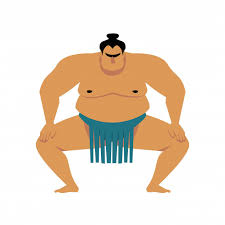Culture of Sumo

April 7, 2021
Hello and welcome to another glorious fist pumper of an article from your favorite writer, me, Garrett R. ’22. Today I will release your spirit and forcibly open all your eyes to what is sumo. Sumo is an ancient Japanese sport that is roughly 2,000 years old and has a flourishing history and culture to go with it. So sit down in your nice La-Z-Boy recliner while I share the flourishing history and culture of the ancient art of sumo with you.
In professional sumo, there are 6 divisions: from lowest to top are Jonokuchi, Jonidan, Sandanme, Makushita, Juryo, and Makunouch which is broadcasted on television. The is further subdivided into 5 ranks being Maegashira, Komusubi, Sekiwake, Ozeki, and the highest possible rank in sumo Yokozuna. Every 2 months there are 15-day tournaments in Japan with Makounochi.
Sumo was originally a partially Shinto religious ceremony that acts as part of the genesis of much of modern sumo traditions. Sumo has no weight divisions, differing from other fighting sports such as boxing or wrestling and smaller rikishi (the term for a sumo wrestler) are expected to be able to take on a much larger and heavier rikishi. This is because early sumo was not competitive and was just a form of entertainment for the people and the kami (shinto spirits) around.
Many more cultural aspects of sumo come from the feudal history of Japan. For example, the keshō-mawashi is an apron that is attached to the mawashi or belt. These are now customized by the rikishi with cool designs, but back in the feudal days, rikishi would wear them while fighting, and the mon (a kind of Japanese banner or flag) of their sponsoring clan would be displayed on it. Now, however, they are only worn in ceremonies like the ring entering ceremony. While fighting, rikishi will have Sagari, which are handmade tassels made by the rikishi themselves on the mawashi in honor of the kesho mawashi.
Sumo includes a myriad of ceremonies. For example, the bow ceremony is where a rikishi from a lower division will stand on the dohyo and spin a yumi bow around at the conclusion of each day. Other ceremonies are the ring entering ceremony at the beginning of each day, and of course, the hair cutting ceremony when a retiring Yokozuna will have his topknot cut off by important people in his life.
Sumo surprisingly is also pretty popular outside of Japan, particularly in the rest of Asia, Hawaii, and the US west coast. Many rikishi even comes from outside Japan. For example, the only 2 active current Yokuzunas, Hakuhō, and Kakuryū are from Mongolia.

